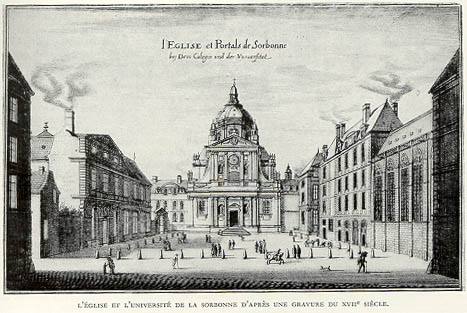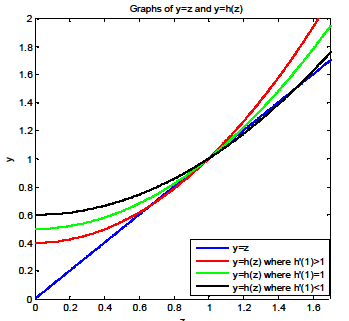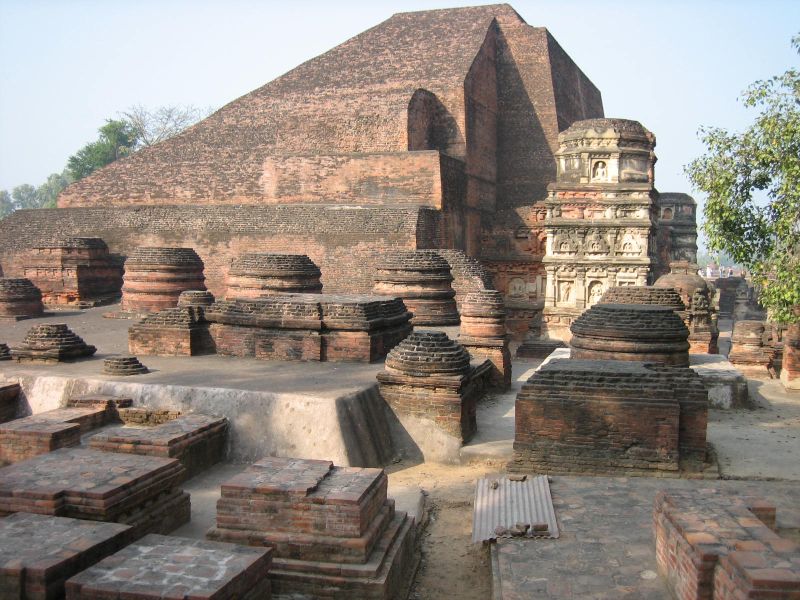|
Jean Bertoin
Jean Bertoin (born 1961) is a French mathematician, specializing in probability theory. Education and career Bertoin received in 1987 his doctorate from University of Paris VI under Marc Yor with ''Étude des processus de Dirichlet''. Bertoin taught and did research there and is now a professor at the University of Zurich. In 1996 he received the Rollo Davidson Prize. In 2002 he was an Invited Speaker with talk ''Some aspects of additive coalescents'' at the International Congress of Mathematicians in Beijing. In 2012 he was an Invited Speaker with talk ''Coagulation with limited aggregations'' at the European Congress of Mathematicians in Kraków. He is a corresponding member of the Mexican Academy of Sciences. His research deals with Lévy processes, Brownian motion, branching processes, random fragmentation, and coalescence processes. His doctoral students include Grégory Miermont Grégory Miermont (born 16 July 1979) is a French mathematician working on probability, rand ... [...More Info...] [...Related Items...] OR: [Wikipedia] [Google] [Baidu] |
|
 |
University Of Paris VI
Pierre and Marie Curie University (french: link=no, Université Pierre-et-Marie-Curie, UPMC), also known as Paris 6, was a public research university in Paris, France, from 1971 to 2017. The university was located on the Jussieu Campus in the Latin Quarter of the 5th arrondissement of Paris, France. UPMC merged with Paris-Sorbonne University into a new combined Sorbonne University. It was ranked as the best university in France in medicine and health sciences by ''Times Higher Education'' in 2018. History Paris VI was one of the inheritors of the faculty of Sciences of the University of Paris, which was divided into several universities in 1970 after the student protests of May 1968. In 1971, the five faculties of the former University of Paris (Paris VI as the Faculty of Sciences) were split and then re-formed into thirteen universities by the Faure Law. The campus of Paris VI was built in the 1950s and 1960s, on a site previously occupied by wine storehouses. The Dean, Ma ... [...More Info...] [...Related Items...] OR: [Wikipedia] [Google] [Baidu] |
 |
Branching Processes
In probability theory, a branching process is a type of mathematical object known as a stochastic process, which consists of collections of random variables. The random variables of a stochastic process are indexed by the natural numbers. The original purpose of branching processes was to serve as a mathematical model of a population in which each individual in generation n produces some random number of individuals in generation n+1, according, in the simplest case, to a fixed probability distribution that does not vary from individual to individual. Branching processes are used to model reproduction; for example, the individuals might correspond to bacteria, each of which generates 0, 1, or 2 offspring with some probability in a single time unit. Branching processes can also be used to model other systems with similar dynamics, e.g., the spread of surnames in genealogy or the propagation of neutrons in a nuclear reactor. A central question in the ... [...More Info...] [...Related Items...] OR: [Wikipedia] [Google] [Baidu] |
 |
1961 Births
Events January * January 3 ** United States President Dwight D. Eisenhower announces that the United States has severed diplomatic and consular relations with Cuba (Cuba–United States relations are restored in 2015). ** Aero Flight 311 (Koivulahti air disaster): Douglas DC-3C OH-LCC of Finnish airline Aero crashes near Kvevlax (Koivulahti), on approach to Vaasa Airport in Finland, killing all 25 on board, due to pilot error: an investigation finds that the captain and first officer were both exhausted for lack of sleep, and had consumed excessive amounts of alcohol at the time of the crash. It remains the deadliest air disaster to occur in the country. * January 5 ** Italian sculptor Alfredo Fioravanti marches into the U.S. Consulate in Rome, and confesses that he was part of the team that forged the Etruscan terracotta warriors in the Metropolitan Museum of Art. ** After the 1960 military coup, General Cemal Gürsel forms the new government of Turkey (25th gov ... [...More Info...] [...Related Items...] OR: [Wikipedia] [Google] [Baidu] |
 |
Academic Staff Of The University Of Zurich
An academy ( Attic Greek: Ἀκαδήμεια; Koine Greek Ἀκαδημία) is an institution of secondary or tertiary higher learning (and generally also research or honorary membership). The name traces back to Plato's school of philosophy, founded approximately 385 BC at Akademia, a sanctuary of Athena, the goddess of wisdom and skill, north of Athens, Greece. Etymology The word comes from the ''Academy'' in ancient Greece, which derives from the Athenian hero, ''Akademos''. Outside the city walls of Athens, the gymnasium was made famous by Plato as a center of learning. The sacred space, dedicated to the goddess of wisdom, Athena, had formerly been an olive grove, hence the expression "the groves of Academe". In these gardens, the philosopher Plato conversed with followers. Plato developed his sessions into a method of teaching philosophy and in 387 BC, established what is known today as the Old Academy. By extension, ''academia'' has come to mean the accumulation, d ... [...More Info...] [...Related Items...] OR: [Wikipedia] [Google] [Baidu] |
 |
Academic Staff Of The University Of Paris
An academy (Attic Greek: Ἀκαδήμεια; Koine Greek Ἀκαδημία) is an institution of secondary education, secondary or tertiary education, tertiary higher education, higher learning (and generally also research or honorary membership). The name traces back to Plato's school of philosophy, founded approximately 385 BC at Akademia, a sanctuary of Athena, the goddess of wisdom and Skills, skill, north of Ancient Athens, Athens, Greece. Etymology The word comes from the ''Academy'' in ancient Greece, which derives from the Athenian hero, ''Akademos''. Outside the city walls of Athens, the Gymnasium (ancient Greece), gymnasium was made famous by Plato as a center of learning. The sacred space, dedicated to the goddess of wisdom, Athena, had formerly been an olive Grove (nature), grove, hence the expression "the groves of Academe". In these gardens, the philosopher Plato conversed with followers. Plato developed his sessions into a method of teaching philosophy and in 3 ... [...More Info...] [...Related Items...] OR: [Wikipedia] [Google] [Baidu] |
|
University Of Paris Alumni
A university () is an institution of higher (or tertiary) education and research which awards academic degrees in several academic disciplines. ''University'' is derived from the Latin phrase ''universitas magistrorum et scholarium'', which roughly means "community of teachers and scholars". Universities typically offer both undergraduate and postgraduate programs. The first universities in Europe were established by Catholic Church monks. The University of Bologna (), Italy, which was founded in 1088, is the first university in the sense of: *being a high degree-awarding institute. *using the word ''universitas'' (which was coined at its foundation). *having independence from the ecclesiastic schools and issuing secular as well as non-secular degrees (with teaching conducted by both clergy and non-clergy): grammar, rhetoric, logic, theology, canon law, notarial law.Hunt Janin: "The university in medieval life, 1179–1499", McFarland, 2008, , p. 55f.de Ridder-Symoens, Hil ... [...More Info...] [...Related Items...] OR: [Wikipedia] [Google] [Baidu] |
|
 |
21st-century French Mathematicians
The 1st century was the century spanning AD 1 (Roman numerals, I) through AD 100 (Roman numerals, C) according to the Julian calendar. It is often written as the or to distinguish it from the 1st century BC (or BCE) which preceded it. The 1st century is considered part of the Classical era, epoch, or History by period, historical period. The 1st century also saw the Christianity in the 1st century, appearance of Christianity. During this period, Europe, North Africa and the Near East fell under increasing domination by the Roman Empire, which continued expanding, most notably conquering Britain under the emperor Claudius (AD 43). The reforms introduced by Augustus during his long reign stabilized the empire after the turmoil of the previous century's civil wars. Later in the century the Julio-Claudian dynasty, which had been founded by Augustus, came to an end with the suicide of Nero in AD 68. There followed the famous Year of Four Emperors, a brief period of civil war and inst ... [...More Info...] [...Related Items...] OR: [Wikipedia] [Google] [Baidu] |
|
Grégory Miermont
Grégory Miermont (born 16 July 1979) is a French mathematician working on probability, random trees and random maps. Biography After high school, Miermont trained for two years at Classe préparatoire aux grandes écoles at the end of which he was admitted at the École normale supérieure in Paris. He studied there from 1998 to 2002, spending the 2001–2002 year as a visiting student in Berkeley. He received his doctorate at Pierre and Marie Curie University in 2003, under the supervision of Jean Bertoin. Then, he became a CNRS researcher in 2004 at University of Paris-Sud and École normale supérieure, and was promoted to the rank of professor in 2009. Since 2012 he is a professor at the École normale supérieure de Lyon. Work Miermont has worked on the theory of probability, more precisely on the geometry and scaling limits of random planar maps, and on fragmentation related to random trees. Awards and honors Diplomas, titles and awards * 2003: PhD Thesis (advisor J. Be ... [...More Info...] [...Related Items...] OR: [Wikipedia] [Google] [Baidu] |
|
 |
Brownian Motion
Brownian motion, or pedesis (from grc, πήδησις "leaping"), is the random motion of particles suspended in a medium (a liquid or a gas). This pattern of motion typically consists of random fluctuations in a particle's position inside a fluid sub-domain, followed by a relocation to another sub-domain. Each relocation is followed by more fluctuations within the new closed volume. This pattern describes a fluid at thermal equilibrium, defined by a given temperature. Within such a fluid, there exists no preferential direction of flow (as in transport phenomena). More specifically, the fluid's overall linear and angular momenta remain null over time. The kinetic energies of the molecular Brownian motions, together with those of molecular rotations and vibrations, sum up to the caloric component of a fluid's internal energy (the equipartition theorem). This motion is named after the botanist Robert Brown, who first described the phenomenon in 1827, while looking th ... [...More Info...] [...Related Items...] OR: [Wikipedia] [Google] [Baidu] |
|
Marc Yor
Marc Yor (24 July 1949 – 9 January 2014) was a French mathematician well known for his work on stochastic processes, especially properties of semimartingales, Brownian motion and other Lévy processes, the Bessel processes, and their applications to mathematical finance. Background Yor was a professor at the Paris VI University in Paris, France, from 1981 until his death in 2014. He was a recipient of several awards, including the Humboldt Prize The Humboldt Prize, the Humboldt-Forschungspreis in German, also known as the Humboldt Research Award, is an award given by the Alexander von Humboldt Foundation of Germany to internationally renowned scientists and scholars who work outside of G ..., the Montyon Prize,Official biography at the French Academy website and was awarded th ... [...More Info...] [...Related Items...] OR: [Wikipedia] [Google] [Baidu] |
|
|
Lévy Process
In probability theory, a Lévy process, named after the French mathematician Paul Lévy, is a stochastic process with independent, stationary increments: it represents the motion of a point whose successive displacements are random, in which displacements in pairwise disjoint time intervals are independent, and displacements in different time intervals of the same length have identical probability distributions. A Lévy process may thus be viewed as the continuous-time analog of a random walk. The most well known examples of Lévy processes are the Wiener process, often called the Brownian motion process, and the Poisson process. Further important examples include the Gamma process, the Pascal process, and the Meixner process. Aside from Brownian motion with drift, all other proper (that is, not deterministic) Lévy processes have discontinuous paths. All Lévy processes are additive processes. Mathematical definition A stochastic process X=\ is said to be a Lévy process ... [...More Info...] [...Related Items...] OR: [Wikipedia] [Google] [Baidu] |